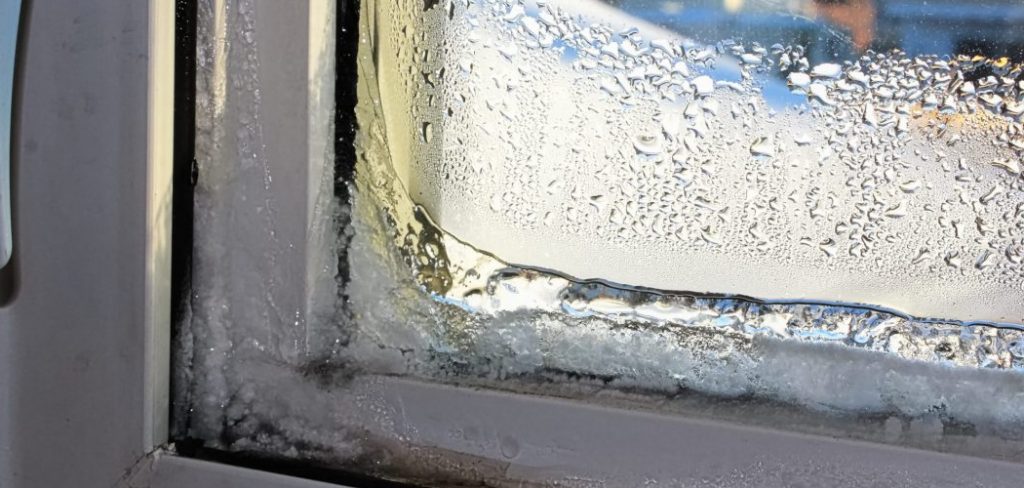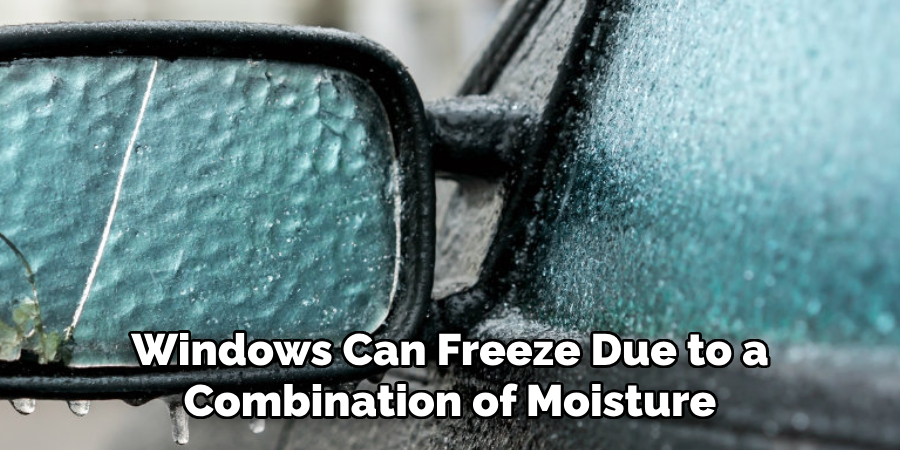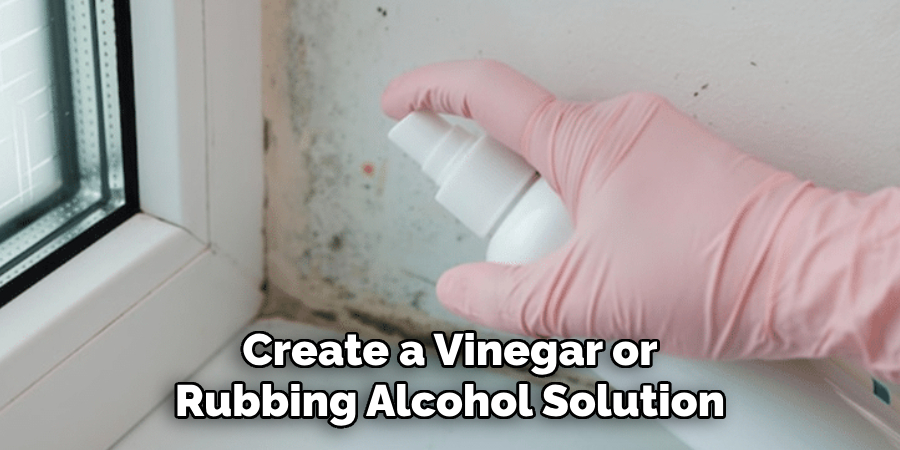During the chilly months, dealing with a frozen window can be a common yet frustrating problem. Understanding how to safely and effectively open a frozen window is essential to maintain the functionality and security of your home.

This guide on how to open a frozen window will provide you with simple, practical steps to tackle this issue efficiently, ensuring that you can address the problem without causing any damage to the window. Whether you’re facing this situation for the first time or seeking to refine your technique, these tips will help you manage frozen windows with ease.
Why Does a Window Freeze?
Windows can freeze due to a combination of moisture and cold temperatures, which are particularly common in winter months. When warm, moist air from inside the home comes into contact with the cold surface of the window, condensation forms. As the outside temperature drops, this condensation can freeze, causing the window to become stuck.
Inefficient insulation, poor window seals, and gaps around the window frame can exacerbate the issue, as they allow cold air to seep in and moisture to accumulate. Understanding these underlying causes can help in preventing windows from freezing and in treating the issue effectively when it occurs.
Needed Materials
Hairdryer:
A hairdryer is a useful tool for defrosting frozen windows as it provides a steady stream of warm air to melt the ice. Make sure to have one on hand before attempting to open a frozen window.
Rubbing Alcohol or De-Icing Spray:
Rubbing alcohol can act as an effective de-icing agent, and it’s commonly used in DIY solutions for opening frozen windows. Alternatively, you can purchase a de-icing spray specifically designed for this purpose.

Scrapers or Credit Cards:
Having a scraper or credit card on hand can help remove any excess ice from the window frame or seal, making it easier to open the window once it has thawed.
8 Steps on How to Open a Frozen Window
Step 1: Identify the Frozen Area
Before attempting to open a frozen window, it is crucial to pinpoint the specific areas where the ice has formed. Carefully inspect the window, particularly focusing on the edges and corners where ice is most likely to accumulate. Look for visible frost or ice buildup and gently feel around the window sash for any sections that feel particularly cold or resistant to movement.
Identifying these trouble spots is essential as it will help you apply heat or lubrication effectively, ensuring a targeted approach to thawing the window.
Step 2: Apply Heat to the Frozen Area
Using a hairdryer or heat gun, apply heat directly to the frozen area of the window. Keep your appliance on low or medium heat and move it back and forth over the frozen section in a slow and circular motion. This will help distribute heat evenly and prevent any damage to the glass from sudden temperature changes.
Continue heating until you notice that the ice has loosened, allowing for movement in the window. Be patient, as this process may take several minutes, depending on how thickly frozen your window is.

Step 3: Gently Push Against the Window
Once you have successfully applied heat to the frozen sections and notice that the ice has started to melt, gently test the window’s mobility by carefully pushing against it from the inside. Apply only slight pressure to avoid damaging the frame or glass. It is vital to be patient during this step, as forcing the window open too quickly or with too much strength can cause cracks or breakage.
If the window begins to give way, you can gradually increase the pressure until it starts to slide open. If the window remains stuck, you may need to reapply the heat and attempt again, ensuring that all the ice has been adequately thawed.
Step 4: Create a Vinegar or Rubbing Alcohol Solution
If applying heat alone does not fully free the window, you can use vinegar or rubbing alcohol solution as an effective secondary measure. Both vinegar and rubbing alcohol have properties that help to break down ice and reduce freezing temperatures. To prepare the solution, mix equal parts of vinegar or rubbing alcohol with water in a spray bottle.
Gently spray the solution onto the affected areas of the window, targeting any sections where ice remains. Allow the solution to sit briefly to aid in the melting process. Be sure to wipe away any excess with a soft cloth or paper towel once the ice has melted to prevent any possible damage to the window frame or sill.

Step 5: Use a Silicone Spray Lubricant
If your window continues to remain stuck despite using heat and the vinegar or rubbing alcohol solution, you can try applying a silicone spray lubricant. This type of lubricant is specifically designed for use on windows and will not harm the glass or frame.
Spray the lubricant along the edges of the window where it meets the frame, as well as along any tracks or channels that guide its movement. Allow the lubricant to work for several minutes before attempting to open the window again.
Step 6: Apply Pressure from Both Sides
If none of the previous steps have worked, you can attempt to apply pressure from both sides of the window simultaneously. This can help to loosen any remaining ice and provide additional force to open the window.
Have another person gently push from the outside while you apply pressure from the inside, being careful not to use too much force that could damage the window.

Step 7: Be Mindful of Safety
Throughout the process of opening a frozen window, it’s important to prioritize safety to prevent injuries or damage. Always ensure that the electrical appliances, like a hairdryer or heat gun, are used in dry conditions to avoid the risk of electrical shocks. Handle vinegar or rubbing alcohol solutions with care, avoiding direct contact with eyes and skin, and ensure the area is well-ventilated to prevent inhalation of any fumes.
Additionally, if pressure is applied from both sides of the window, communicate clearly with the person helping you to synchronize efforts and minimize the risk of accidentally applying too much force. Taking these precautions will ensure the process remains safe and effective.
Step 8: Prevent Future Freezing
To avoid dealing with frozen windows in the future, it is crucial to address underlying issues that contribute to window freezing. Inspect your window frames and seals regularly for signs of wear or damage, and replace any faulty components promptly to prevent cold air and moisture from seeping inside. Additionally, ensure proper insulation around windows to maintain a temperature barrier between the warm air inside your home and cold outdoor temperatures. By addressing these issues beforehand, you can save yourself the time and effort of dealing with a frozen window again in the future.
Following these steps on how to open a frozen window will help you safely and effectively open a frozen window, whether dealing with ice buildup in the winter or unexpected freezing temperatures. By properly identifying the problem areas and using targeted solutions, you can prevent damage to your windows and maintain their functionality throughout the year.
Frequently Asked Questions
Q: How Long Does It Take to Open a Frozen Window?
A: The time it takes to open a frozen window can vary depending on the thickness of the ice and the effectiveness of the methods used. It may take anywhere from a few minutes to half an hour, so it’s important to be patient and not rush the process.
Q: Can I Use Salt or De-Icing Solutions on My Windows?
A: It is not recommended to use salt or de-icing solutions directly on windows, as they can cause damage and leave behind residue. Instead, opt for targeted methods such as heat or vinegar/rubbing alcohol solutions.
Q: How Do I Know If My Window Is Frozen Shut?
A: If your window does not move when attempting to open it, or you notice visible ice buildup around the edges of the frame, it is likely frozen shut.
Q: How Can I Prevent My Windows from Freezing?
A: Regularly inspect and maintain your windows to ensure they are properly sealed, insulated, and free of any damages that could contribute to freezing. Additionally, keeping a consistent indoor temperature can help prevent extreme temperature differences between the inside and outside of your home.
Conclusion
In dealing with frozen windows, patience and the right approach are key to ensuring both safety and effectiveness. By carefully identifying frozen areas, applying heat strategically, and using solutions like vinegar, rubbing alcohol, or silicone spray lubricant, you can successfully unfreeze even the most stubborn windows.
These steps on how to open a frozen window not only help maintain your home’s comfort and accessibility during cold weather but also protect your windows from damage. Preventative measures, such as regular maintenance and proper insulation, serve as the best defense against future freezing issues. Implementing these strategies will safeguard your windows and make harsh winter conditions much more manageable.
About
Safety Fic is a distinguished figure in the world of Diy design, with a decade of expertise creating innovative and sustainable Diy solutions. His professional focus lies in merging traditional craftsmanship with modern manufacturing techniques, fostering designs that are both practical and environmentally conscious. As the author of diy, Safety Fic delves into the art and science of Safety Fic-making, inspiring artisans and industry professionals alike.
Education RMIT University
(Melbourne, Australia) Associate Degree in Design (Safety Fic) Focus on sustainable design, industry-driven projects, and practical craftsmanship. Gained hands-on experience with traditional and digital manufacturing tools, such as CAD and CNC software.
Nottingham Trent University
(United Kingdom) Bachelor’s in diyfastly.com and Product Design (Honors) Specialized in product design with a focus on blending creativity with production techniques. Participated in industry projects, working with companies like John Lewis and Vitsoe to gain real-world insights.
Publications and Impact
In diy, Safety Fic his insights on indoor design processes, materials, and strategies for efficient production. His writing bridges the gap between artisan knowledge and modern industry needs, making it a must-read for both budding designers and seasoned professionals.
